In Google Books N-Gram Viewer, the term “computer lab” peaks for frequency of use in 2003. As of 2022, the term had returned to mid-1990s levels. Why? The past 22 years have rendered the notion of traditional computer labs obsolete as on-the-go mobile devices and HD flat screens replaced CRT monitors. In the 21st century digital age, defined by rapid technological advancements, media centers have evolved from traditional resource libraries into dynamic social and intellectual hubs. As educational institutions and organizations adapt to changing student needs, the integration of advanced technology into innovative furniture solutions has redefined what it means to build a digital learning space. The culture of scheduling trips to one or several centralized computer labs has shifted to seamlessly passing through the omnipresent “digital commons” across campus.
Technology Integration: A Game-Changer
Technology lies at the heart of the modern media center. Whether it is a laptop, tablet, or in-surface charging station, technology empowers users with tools to collaborate, learn, and innovate seamlessly. SMARTdesks®, industry leader in furnishing higher education spaces, has changed with the times. From inception in 1997 to today, SMARTdesks has designed furnishings that facilitate learning in lockstep with advancements in technology.
At the Children’s National Medical Center, for example, modular conference tables with flipIT® Laptop Safes ensure secure, convenient access to devices for 8 users. When laptops need to be stowed between sessions, they are secured, charging at the point of use. When deployed for use, the lids are low profile and do not obstruct lines of sight in the room. In a relatively small space, the Motif conference table puts 8 users in front of their networked laptops and a projection screen: engineered for practical use in an institutional setting for education.
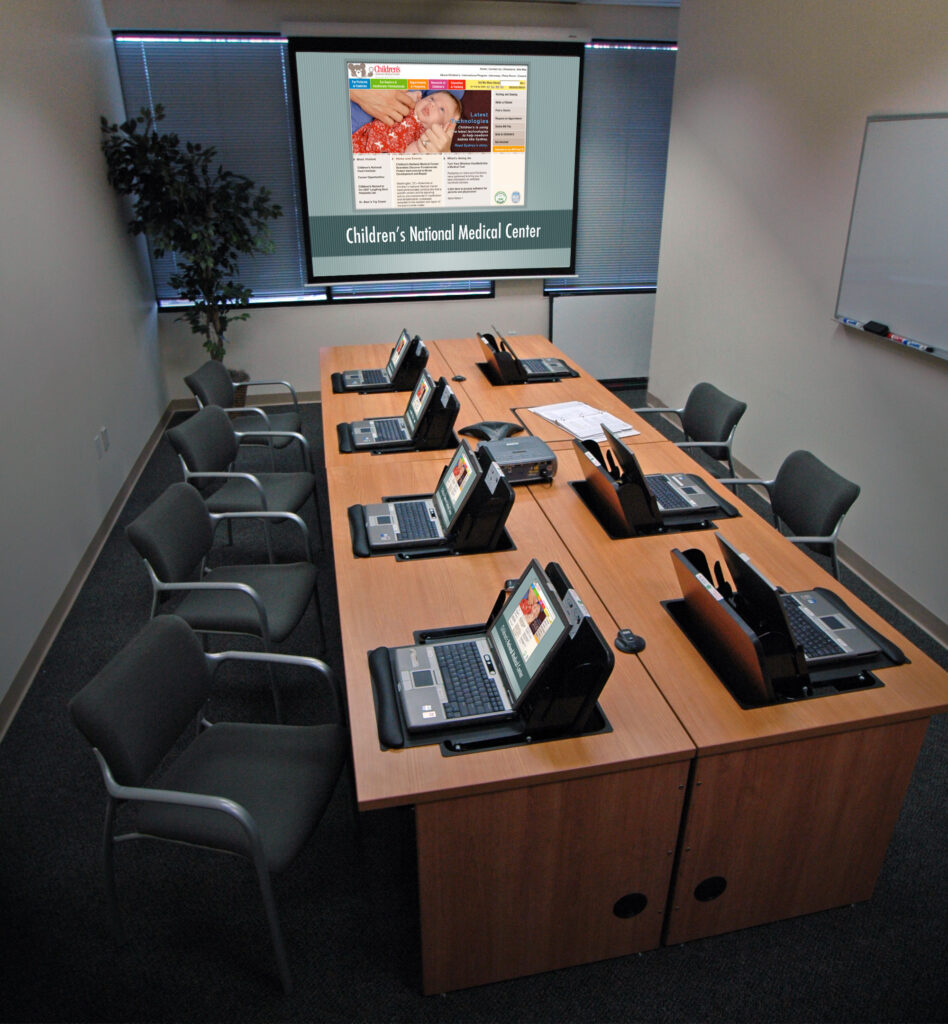
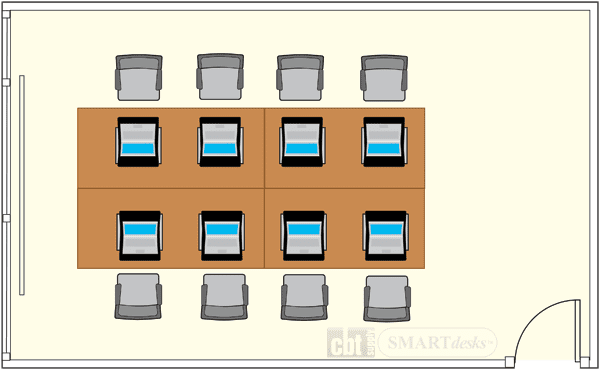
The DC Child Support Center opted for a Piano™ conference table with 18 seats, with its collaborative design and integrated wire management systems, enables group work while maintaining a sleek appearance. It serves as a hub for technology-driven collaboration, meeting the demands of public sector teams. Flush-mount wire clip system allowed fast, neat installation. Bayonet snap-locks into chassis holes and can be released and reused. Perforated chassis provides complete, natural ventilation for installed components and multi-level racks are hinged for easy access.


This Piano™ Conference Table is complete with a hexagonal center lid is fixed position, including two articulating triangle shaped lids for wire management access.
Flexible and Collaborative Furnishings: Aesthetics Meets Functionality
Modern media centers must accommodate a range of activities, from individual study to group collaboration, requiring adaptable furniture solutions. For Lehigh Carbon Community College, SMARTdesks® integrated a Piatto™ conference table with flipIT® monitors and CineStage™ projectors, allowing quick transitions between study and collaboration. While many libraries have reduced the number of fixed workstations available, a multi-use worksurface that offers both fixed technology with BYOD capabilities gives each institution – and student – maximum flexibility.
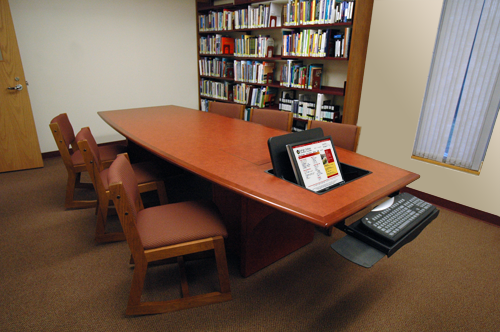
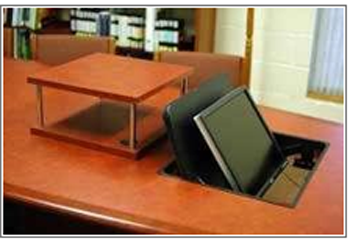
Similarly, Severn Bancorp headquarters uses flipIT® Monitor Support Systems and a Piatto® conference table to maximize versatility, enabling users to alternate between digital and traditional meeting setups. The Piatto™ multi-function conference table supports an emerging paradigm. Today, there is little distinction between the processes of business communication and the processes of training and education. They share the same internet, and they run similar applications for video teleconferencing and e-learning. The need to interact between students and teacher is parallel to the needs for players in business to present and exchange ideas and information. Interiors are increasingly becoming centered around a multifunctional conference table that transforms into a computer-enabled theater for learning and communication.
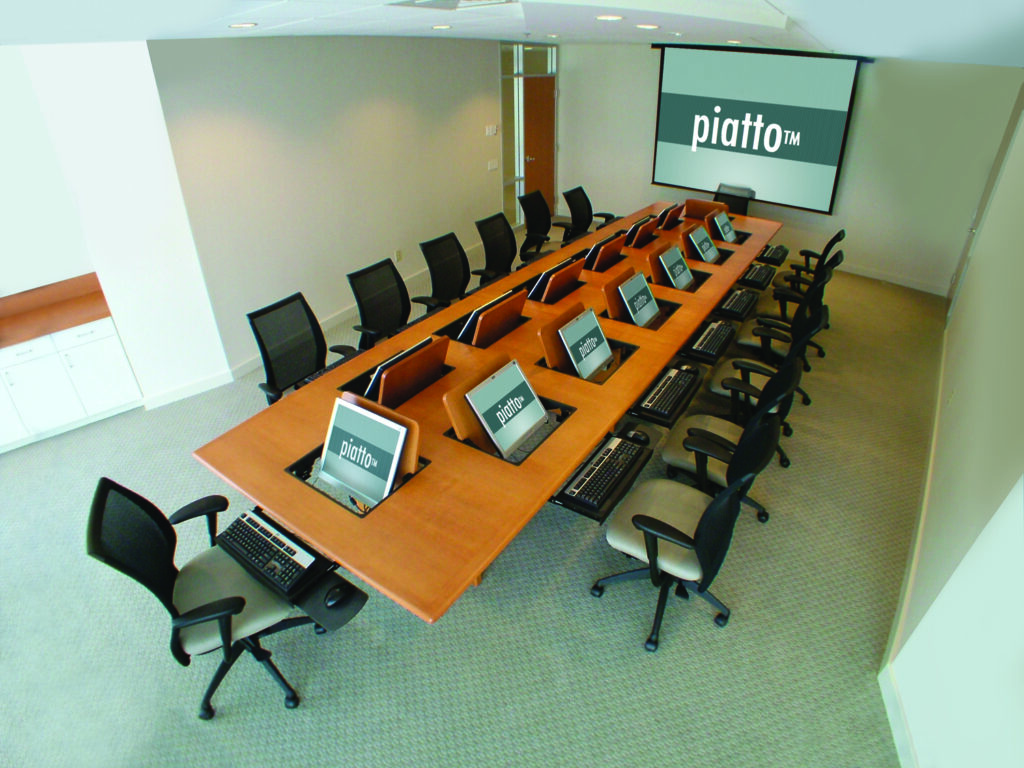
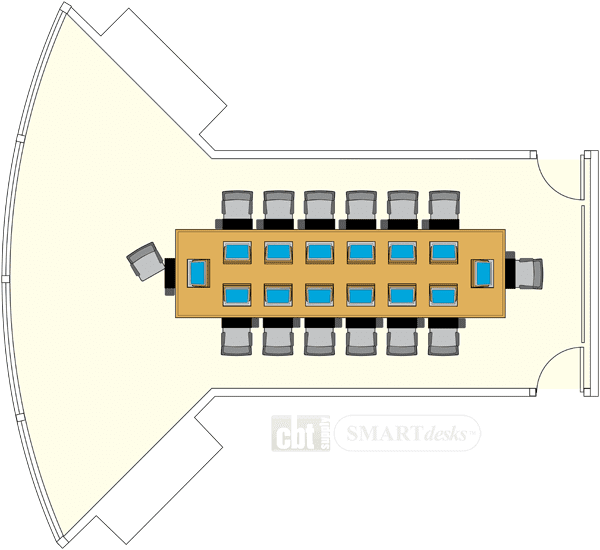
Why Universities Should Update Their Media Centers
Enhance Student Recruitment and Retention
Transform Learning and Collaboration
Attract Top Faculty and Corporate Partnerships
Accessibility and Inclusion
Sustainability
Conclusion
Media centers are no longer localized spaces on university campuses. They are the pulse of modern education, fostering collaboration and inclusivity across the entire institution. By investing in updates that integrate advanced technology, flexible furnishings, and sustainable design, universities can attract students, faculty, and partners while securing their place as leaders in education. For institutions looking to thrive in an increasingly competitive landscape, an updated media center is not just a luxury—it is a necessity, and SMARTdesks® is here to help pave the way forward. Book a consultation to get started today!


